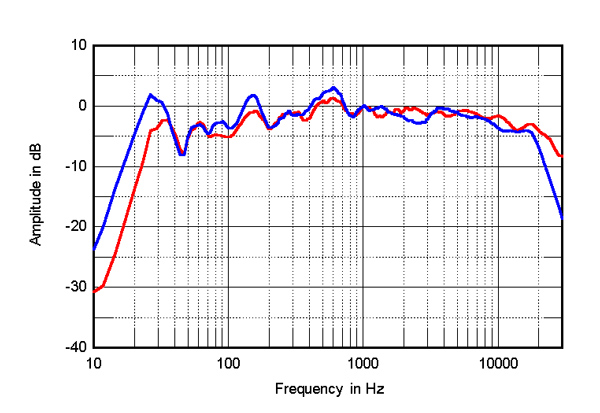JA measures them outdoor on his porch I think. And from what I recall, takes him a whole weekend to do.
He doesn't always measure outdoors.
Example:
Description:
Fig.1 TAD ME1, spatially averaged, 1/6-octave response
in JA's listening room (red), and of Dynaudio Contour 20 (blue).
"Listening done, I measured the TAD's spatially averaged response
in my room (footnote 2). The result is shown as the red trace in fig.1. The ME1's output gently slopes down in the lower midrange and bass, but, as noted above, there's useful low-frequency extension in-room down to 30Hz. The upper-frequency in-room response is superbly even, and while a gentle measured top-octave rolloff can be seen, I feel that this is actually more neutral in-room behavior, given the increased absorptivity of the room furnishings in the high treble.
The blue trace in fig.1 is the spatially averaged response of the Dynaudio Contour 20, which had impressed me when I reviewed it in
May 2017 and wrote that it is indeed "a high-performance loudspeaker with a transparent sound." The Dynaudio's
in-room response is not quite as even as the TAD's, and there's a little less energy in-room above 8kHz, but it's otherwise very similar. While the speakers are very different, other than both being stand-mounted speakers of similar size, I suspect that this is a case of convergent evolution."
Read more at
https://www.stereophile.com/content...-john-atkinson-march-2018#XDxVokxQk3fwKbzi.99
In this case, not only does he measure the TAD in-room, but compares it to an earlier Dynaudio measurement taken almost a year earlier in the same room.
If it's good enough for JA to publish comparative in-room results for speakers, I don't see why it shouldn't be okay for ASR, too.


